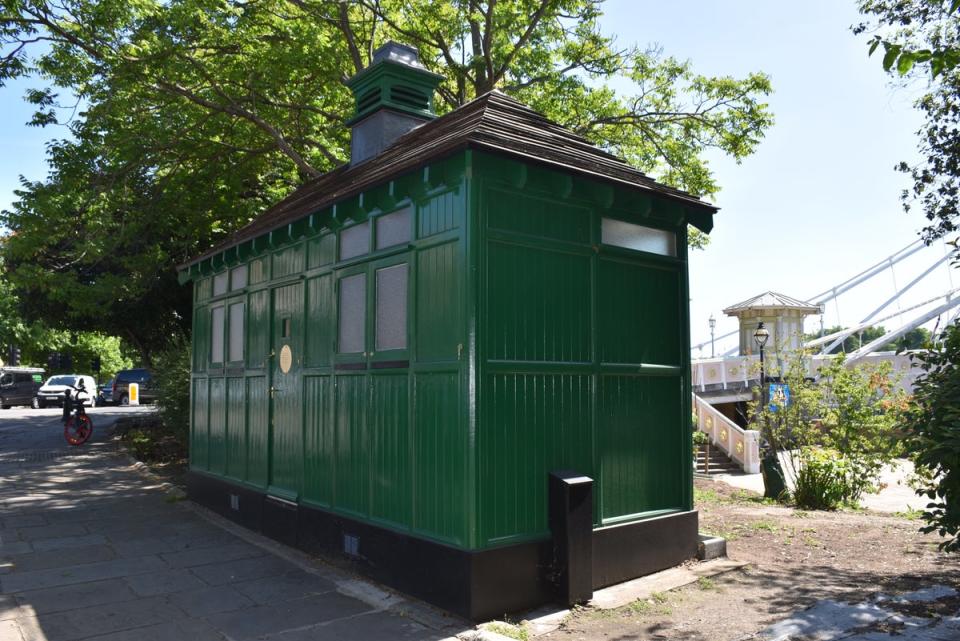Gimme shelter: Two more of London’s green cabbie huts awarded Grade II-listed status

Two brightly-painted emerald cabbies’ shelters in London have been awarded Grade II-listed status by Historic England.
The new protection, already bestowed on 10 other similar huts, means limited changes can be made to the two Victorian structures at Pont Street in Belgravia and on the Chelsea Embankment.
At their peak in the nineteenth century, there were 61 shelters across London but today that number has been whittled down to 13. Many are still in active use, providing cosy refuges for those who have completed the Knowledge.

Emily Gee, London and the South East Regional Director, Historic England, said: “We’re delighted to see these two cabmen’s shelters gain the recognition they deserve. They are London icons just as much as the red bus or black cab and a reminder of how our transport systems have changed over time.
“It’s wonderful to see these historic structures still in use today or finding a new lease of life – long may it continue.”
Dating back to 1875, the shelters are some of the few relics of nineteenth-century London’s horse-drawn hansom cab trade.
The idea of providing shelters on the taxi ranks was first conceived by Captain George C Armstrong, editor of The Globe newspaper who found himself unable to get a cab during a storm because the drivers had all sought refuge in local pubs.

He helped establish The Cabmen’s Shelter Fund (CSF) in London in 1875, providing warm and dry rest stops at ranks across the capital. The shelters had a small kitchen run as a café by an attendant and space for around 10 drivers to sit, enjoy a meal and each other’s company. Gambling, drinking and swearing were strictly forbidden.
Most of London cabmen’s shelters have been lost – their roadside position made them prone to damage from traffic. However many of the surviving shelters are still in use by black cab drivers.
The shelter at Pont Street was built by the Cabmen’s Shelter Fund in 1892, replacing one from 1875, which was one of the earliest cabmen’s shelters constructed in London.
Inside, the shelter is reserved strictly for black cab licence holders, while non-licence holders and the public can be served from outside the hatch.
The Chelsea Embankment shelter, sometimes referred to as ‘The Pier’ due to its proximity to Cadogan Pier, was built by the Cabmen’s Shelter Fund in 1912.
This hut became redundant and fell into a poor state of repair following the introduction of the Red Route along Chelsea Embankment in 1999, which prevented cab drivers from stopping.
There have been various repairs to the shelter over the years - most recently funded by a £12,000 grant from the Heritage of London Trust, who hope to soon open the newly restored shelter as a public café.
The new shelter had its rotten floor stripped out and new timber cladding on three sides, painted green in the traditional Shelter colours, and a new roof clad in cedar feather-edge tiles. The total cost of the project was £85,000.
The shelters’ Grade II status means restoration has to be carefully undertaken. Replacement materials must match the originals with even the shade of paint – Dulux Buckingham Paradise 1 Green – ordered to match the first huts.
Jimmy Jenkins, of the Cabmen’s Shelter Fund, said: “The shelters operate in increasingly challenging conditions within London and this shelter had been deteriorating ever since the last tenant left in 2010. I am so pleased it looks as good as new again and will play a role in serving Londoners into the future.”
After the recent listings, 12 of the surviving 13 shelters are now protected.

 Yahoo Finance
Yahoo Finance 